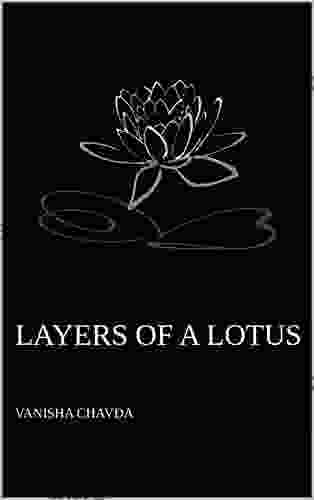Enacting the Bible in Medieval and Early Modern Drama: Manchester Medieval Sources

The Bible, a foundational text in Western civilization, has had a profound impact on the arts and literature of Europe. From the earliest days of Christianity, biblical narratives and characters have been adapted and performed in various dramatic forms, reflecting the religious and cultural beliefs of their time. The medieval and early modern periods, in particular, witnessed a vibrant tradition of biblical drama, which played a significant role in shaping the religious and cultural landscape of the era.
The Manchester Medieval Sources (MMS),a renowned collection of digitized manuscripts and early printed books, provides a rich trove of resources for studying the history of biblical drama. This vast collection includes plays, scripts, and other documents that shed light on the theatrical practices, adaptations, and interpretations of biblical narratives during the medieval and early modern periods.
4.5 out of 5
| Language | : | English |
| File size | : | 2581 KB |
| Text-to-Speech | : | Enabled |
| Screen Reader | : | Supported |
| Enhanced typesetting | : | Enabled |
| Print length | : | 304 pages |
| Hardcover | : | 552 pages |
| Lexile measure | : | 1700L |
| Item Weight | : | 2.3 pounds |
| Dimensions | : | 9.2 x 1.5 x 6.1 inches |
This article will explore the rich tradition of biblical drama in medieval and early modern England, drawing upon the invaluable resources of the Manchester Medieval Sources. We will examine the theatrical traditions, adaptations, and interpretations that shaped this vibrant genre, and consider its significance in the religious and cultural context of the time.
Theatrical Traditions of Biblical Drama
Biblical drama emerged in the medieval period as a means of conveying religious teachings and stories to a largely illiterate audience. These early plays were often performed in churches or monasteries, and they typically featured simple staging and costumes. However, as the genre developed, it began to incorporate more elaborate theatrical elements, such as elaborate sets, costumes, and special effects.
One of the most common forms of biblical drama in the medieval period was the mystery play. Mystery plays were typically performed in cycles that depicted the entire biblical narrative, from the Creation to the Last Judgment. These plays were often sponsored by guilds or towns, and they were performed on movable stages that traveled from place to place.
Another popular form of biblical drama was the morality play. Morality plays were allegorical dramas that taught moral lessons. The characters in morality plays often represented abstract concepts, such as Good and Evil, and the plays typically featured a clear moral message.
In the early modern period, biblical drama continued to flourish, but it also underwent significant changes. The rise of professional theater companies led to the development of more sophisticated plays with more complex plots and characters. Biblical plays from this period often reflected the political and religious tensions of the time, and they sometimes contained veiled criticism of the established order.
Adaptations of Biblical Narratives
The dramatists of the medieval and early modern periods adapted biblical narratives in a variety of ways to suit the needs of their audiences. Some plays faithfully followed the biblical text, while others made significant changes to the story or characters.
One of the most common adaptations of biblical narratives was the inclusion of comic elements. Medieval and early modern audiences enjoyed humor, and playwrights often incorporated comic scenes into their biblical plays. This humor could be used to lighten the mood of a serious play, or it could be used to satirize religious or social practices.
Another common adaptation was the addition of female characters. The Bible contains relatively few female characters, but playwrights often added female roles to their plays in order to make them more appealing to audiences. These female characters could be used to represent a variety of themes, such as love, motherhood, and temptation.
Playwrights also sometimes made changes to the characters and events of biblical narratives in order to reflect the social and political realities of their own time. For example, in the early modern period, many playwrights wrote biblical plays that reflected the Protestant Reformation. These plays often criticized the Catholic Church and promoted Protestant beliefs.
Interpretations of Biblical Narratives
The plays of the medieval and early modern periods offer a wide range of interpretations of biblical narratives. Some plays presented a straightforward and literal interpretation of the Bible, while others offered more allegorical or symbolic readings.
One of the most common interpretations of biblical narratives in medieval drama was the typological interpretation. This approach viewed the events of the Old Testament as foreshadowing events in the New Testament. For example, the sacrifice of Isaac was often seen as a type of the sacrifice of Christ.
Another common interpretation was the moral interpretation. This approach focused on the moral lessons that could be learned from biblical stories. Plays that used this approach often included characters who represented abstract concepts, such as Good and Evil.
In the early modern period, biblical plays began to reflect the growing influence of humanism. This movement emphasized the importance of human reason and experience, and it led to a more naturalistic interpretation of biblical narratives. Plays from this period often focused on the human aspects of biblical characters, and they sometimes explored the psychological and emotional motivations of their actions.
The Significance of Biblical Drama
Biblical drama played a significant role in the religious and cultural life of the medieval and early modern periods. These plays provided a means of conveying religious teachings to a largely illiterate audience, and they also offered a way to explore the moral and philosophical issues of the time.
Biblical plays were also an important source of entertainment. They were often performed at festivals and other special occasions, and they provided a welcome diversion from the everyday hardships of life.
The plays of the medieval and early modern periods offer a valuable window into the religious, cultural, and social beliefs of the time. They are a testament to the creativity and ingenuity of the playwrights who adapted and performed them, and they continue to be a source of inspiration and enjoyment today.
The Manchester Medieval Sources provide a rich and invaluable resource for studying the history of biblical drama in the medieval and early modern periods. These plays offer a fascinating glimpse into the religious, cultural, and social beliefs of the time, and they continue to be a source of inspiration and enjoyment today.
Through the study of biblical drama, we can gain a better understanding of the ways in which the Bible has been adapted and performed throughout history. We can also explore the ways in which these plays have reflected the religious, cultural, and social changes of their time.
The Manchester Medieval Sources are a treasure trove of information for anyone interested in the history of biblical drama. They provide a unique opportunity to explore the ways in which the Bible has been adapted and performed in different times and places, and they offer a valuable resource for understanding the religious, cultural, and social history of the medieval and early modern periods.
References
* Brown, Peter. "The Body and Society: Men, Women, and Sexual Renunciation in Early Christianity." New York: Columbia University Press, 1988. * Carlson, Marvin. "Performance: A Critical ." New York: Routledge, 2004. * Coleman, Janet, and Katherine H. Tachau, eds. "Medieval Manuscripts and Images in Context: Studies in Manuscript Illumination." Turnhout: Brepols, 2006. * Duffy, Eamon. "The Stripping of the Altars: Traditional Religion in England, c.1400-c.1580." New Haven: Yale University Press, 1992. * Foakes, R. A., and R. T. Rickert, eds. "English Drama to 1710." Cambridge: Cambridge University Press, 1949. * Galloway, Andrew. "The Medieval Renaissance: A Reappraisal." London: Hambledon and London, 2008. * Honan, Park. "The Cambridge Companion to Medieval English Theatre." Cambridge: Cambridge University Press, 2004. * Hosington, William. "Sacred Texts and the Medieval Imagination." Notre Dame, IN: University of Notre Dame Press, 2012. * Hussey, Maurice. "The Life and Art of John Skelton." Oxford: Basil Blackwell, 1990. * Ingram, Martin. "Church, Community, and Patronage in Medieval England: The Evidence of the Parish Church of Thame, Oxfordshire." Woodbridge: Boydell Press, 2008. * Jacob, E. F. "The Fifteenth Century, 1399-1485." Oxford: Clarendon Press, 1961. * Jeffery, David L. "A Dictionary of Biblical Tradition in English Literature." Grand Rapids, MI: William B. Eerdmans Publishing Company, 1992. * Kelly, Henry Ansgar. "Chaucer and the Cult of Saint Valentine." Chapel Hill: University of North Carolina Press, 1986. * Knowles, David. "The Religious Orders in England, Volume I: The Middle Ages." Cambridge: Cambridge University Press, 1948. * Leech, Clifford. "Lyric Forms in English." London: Routledge, 1967. * Levy
4.5 out of 5
| Language | : | English |
| File size | : | 2581 KB |
| Text-to-Speech | : | Enabled |
| Screen Reader | : | Supported |
| Enhanced typesetting | : | Enabled |
| Print length | : | 304 pages |
| Hardcover | : | 552 pages |
| Lexile measure | : | 1700L |
| Item Weight | : | 2.3 pounds |
| Dimensions | : | 9.2 x 1.5 x 6.1 inches |
Do you want to contribute by writing guest posts on this blog?
Please contact us and send us a resume of previous articles that you have written.
 Top Book
Top Book Novel
Novel Fiction
Fiction Nonfiction
Nonfiction Literature
Literature Paperback
Paperback Hardcover
Hardcover E-book
E-book Audiobook
Audiobook Bestseller
Bestseller Classic
Classic Mystery
Mystery Thriller
Thriller Romance
Romance Fantasy
Fantasy Science Fiction
Science Fiction Biography
Biography Memoir
Memoir Autobiography
Autobiography Poetry
Poetry Drama
Drama Historical Fiction
Historical Fiction Self-help
Self-help Young Adult
Young Adult Childrens Books
Childrens Books Graphic Novel
Graphic Novel Anthology
Anthology Series
Series Encyclopedia
Encyclopedia Reference
Reference Guidebook
Guidebook Textbook
Textbook Workbook
Workbook Journal
Journal Diary
Diary Manuscript
Manuscript Folio
Folio Pulp Fiction
Pulp Fiction Short Stories
Short Stories Fairy Tales
Fairy Tales Fables
Fables Mythology
Mythology Philosophy
Philosophy Religion
Religion Spirituality
Spirituality Essays
Essays Critique
Critique Commentary
Commentary Glossary
Glossary Bibliography
Bibliography Index
Index Table of Contents
Table of Contents Preface
Preface Introduction
Introduction Foreword
Foreword Afterword
Afterword Appendices
Appendices Annotations
Annotations Footnotes
Footnotes Epilogue
Epilogue Prologue
Prologue Sally Larsen
Sally Larsen Sanjoy Ganguly
Sanjoy Ganguly Conrad Tarte
Conrad Tarte Stephen M Caliendo
Stephen M Caliendo Danny White
Danny White Rob Sinclair
Rob Sinclair Len Unsworth
Len Unsworth Automated Retirees
Automated Retirees Bitel Beyette
Bitel Beyette Matthew Knoester
Matthew Knoester Tito Rajarshi Mukhopadhyay
Tito Rajarshi Mukhopadhyay Sarah Mahmood
Sarah Mahmood William Kamkwamba
William Kamkwamba Nuala Gardner
Nuala Gardner Joy Callaway
Joy Callaway Gary A Baribeault
Gary A Baribeault Elle Marr
Elle Marr Doreen Owens Malek
Doreen Owens Malek Suzanne Slade
Suzanne Slade Peter C Brown
Peter C Brown
Light bulbAdvertise smarter! Our strategic ad space ensures maximum exposure. Reserve your spot today!
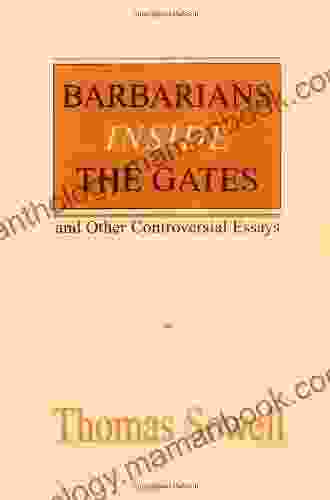
 Cole PowellBarbarians Inside the Gates and Other Controversial Essays: A Deep Dive into...
Cole PowellBarbarians Inside the Gates and Other Controversial Essays: A Deep Dive into...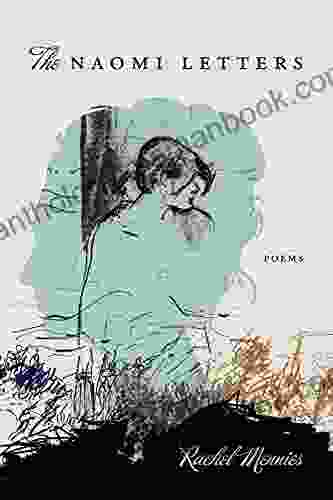
 Federico García LorcaUnveiling the Literary Legacy of "The Naomi Letters": A Journey Through the...
Federico García LorcaUnveiling the Literary Legacy of "The Naomi Letters": A Journey Through the...
 Isaac AsimovA Journey Through Jane Austen's Literary Masterpieces: Sense and Sensibility,...
Isaac AsimovA Journey Through Jane Austen's Literary Masterpieces: Sense and Sensibility,... Edgar CoxFollow ·14.4k
Edgar CoxFollow ·14.4k Hamilton BellFollow ·19.7k
Hamilton BellFollow ·19.7k David Foster WallaceFollow ·5.7k
David Foster WallaceFollow ·5.7k Jessie CoxFollow ·9.6k
Jessie CoxFollow ·9.6k Dan BellFollow ·14.5k
Dan BellFollow ·14.5k Graham BlairFollow ·15.5k
Graham BlairFollow ·15.5k Kirk HayesFollow ·16k
Kirk HayesFollow ·16k Rex HayesFollow ·4.8k
Rex HayesFollow ·4.8k

 Vernon Blair
Vernon BlairThe Woman I Met in My Dream: An Unforgettable Night of...
As the veil of night...
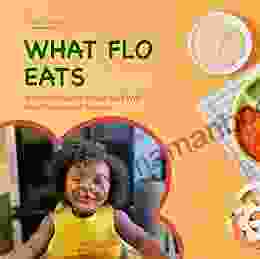
 Carlos Fuentes
Carlos FuentesThe Ultimate Guide to Healthy Eating for Toddlers: Meal...
As a parent of a...

 Peter Carter
Peter CarterInside My Autistic Mind: A Journey of Self-Discovery and...
Autism spectrum disorder (ASD) is a...

 Isaac Asimov
Isaac AsimovA Journey Through Jane Austen's Literary Masterpieces:...
Jane Austen, the renowned English...

 Hank Mitchell
Hank MitchellAdvancements in Textiles: Science and Technology by...
The textile...
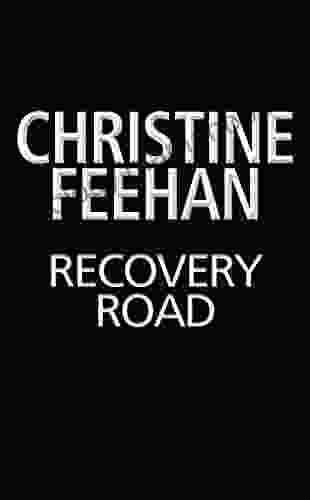
 Troy Simmons
Troy SimmonsRecovery Road: An Odyssey of Hope and Redemption by...
Recovery Road is a...
4.5 out of 5
| Language | : | English |
| File size | : | 2581 KB |
| Text-to-Speech | : | Enabled |
| Screen Reader | : | Supported |
| Enhanced typesetting | : | Enabled |
| Print length | : | 304 pages |
| Hardcover | : | 552 pages |
| Lexile measure | : | 1700L |
| Item Weight | : | 2.3 pounds |
| Dimensions | : | 9.2 x 1.5 x 6.1 inches |





